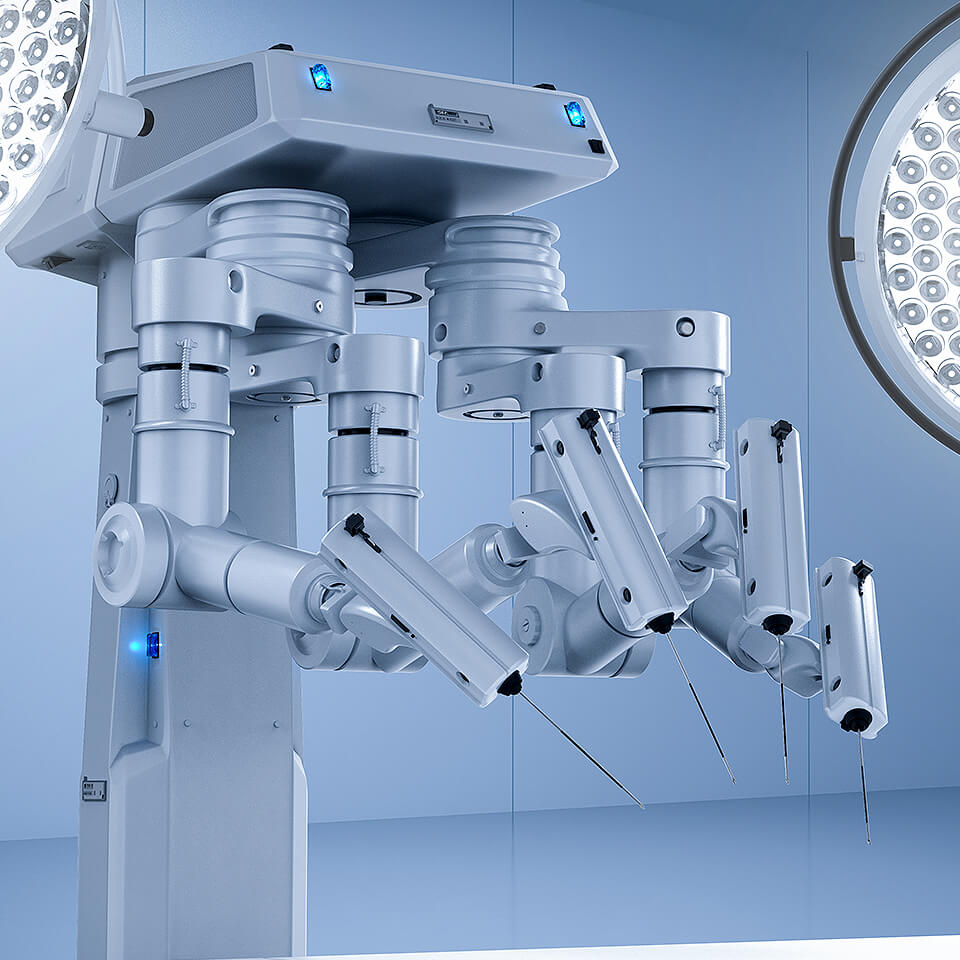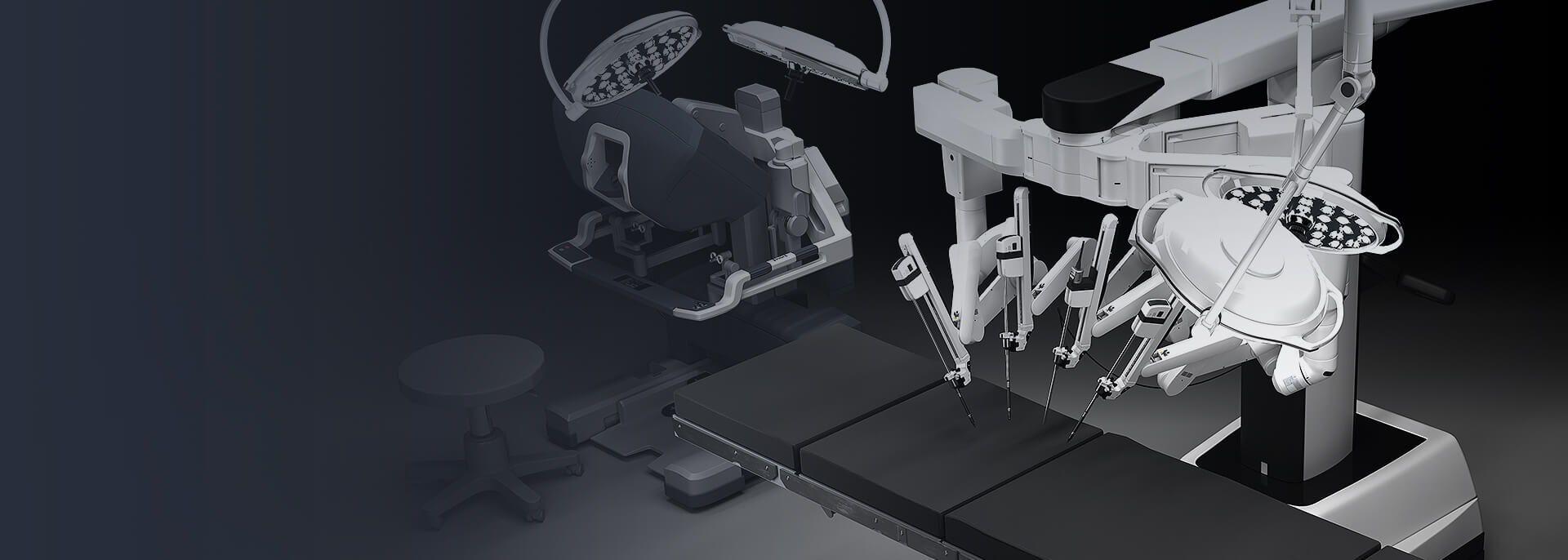What is Robotic Surgery?
Traditional Open Surgery
For centuries, surgery has been done using “open” surgery. This involves making an incision in the body to access the area or organ that needs surgery. A large incision sometimes results in enough blood loss that the patient requires a blood transfusion with attendant risks of reaction to the transfusion or rarely, infection. Open surgery often leaves a large wound that requires time for the body to heal. The skin and superficial tissues must heal, muscles and “fascia” (strength layers) that have been cut through must heal and organs, sometimes even bones, must heal. This typically requires a hospital stay for several days and strong pain medicine.
The recovery period at home often involves six to eight weeks without strenuous activity or lifting more than fifteen pounds. During the healing process occasionally the incision can get infected, sometimes requiring drainage or even another surgery to correct the problem. After healing, hernias, or bulging of tissue can occur and can require another surgery to correct.
Laparoscopic Surgery
In the 1990s, a new method of accessing the inside of the body called laparoscopy or “keyhole” surgery was popularized. This technique involves placing a needle in the body and inflating the area of interest with gas, typically carbon dioxide. Small incisions are then made, usually about 1/2 inch, and “ports” or access portals are placed in the body. A camera is placed through one of the ports to look inside the body. The camera is connected to a monitor that provides a view inside the body for the surgeon, assistant and surgical team. Tools on long thin instruments are placed inside the body through ports and surgery is performed.
In the 1993, the first kidney was removed via laparoscopy by Dr. Clayman and his team. Laparoscopy resulted in smaller incisions, less blood loss, less risk of transfusion, shorter hospital stay, less use of pain medicine and quicker recovery. Laparoscopy is now used in many types of surgery in urology, general surgery, colorectal surgery, gynecology, cardiothoracic surgery, orthopedic surgery and so on.
Robotic Surgery

In the late 1990s, robotic surgery became available. Rather than the surgeon holding the tools on long thin instruments themselves, the tools are connected to robotic arms and the robot is controlled by the surgeon. The robotic platform available today is called the Da Vinci Surgical System by Intuitive Medical.
The Robotic Team
The surgeon sits in the “console” which is a specialized control center where one can control the camera, robotic arms and application of different types of electricity to stop bleeding. An assistant sits at the patient’s bedside using laparoscopic tools through ports to introduce stitches, provide suction, change robotic tools and make adjustments to the robotic arms as needed. A scrub technician sits at the other side of the patient to provide tools and sutures and make adjustments to the robotic arms. The anesthesiologist remains at the patient’s head, providing anesthesia and monitoring the patient’s heart and lungs.
The Robotic Interface
Using a robotic interface offers a number of important advantages. The robotic camera provides tenfold magnification and three dimensional vision rather than two dimensional vision used during laparoscopy. The robotic arms can not only move in and out and control the instrument, but also introduce a “wrist” type motion for the surgeon, a whole other dimension of movement. In fact, the robotic wrist can twist over 360 degrees, more than a human wrist! The robotic interface provides motion scaling to make each of the surgeon’s movements more precise. The robot also makes fine adjustments to filter out human tremor, inherent in laparoscopy. Finally, robot surgery is more ergonomic (comfortable) for the surgeon and surgical team, resulting in less surgeon fatigue during long complex cases.
The Advantages of Robotic Surgery
Advantages include smaller incisions than open surgery, less blood loss, lower risk of blood transfusion, shorter hospital day, decreased need for pain medication, quicker recovery and return to normal function and decreased risk of wound infection or hernia.
Print PageContact us to request an appointment or ask a question. We're here for you.



